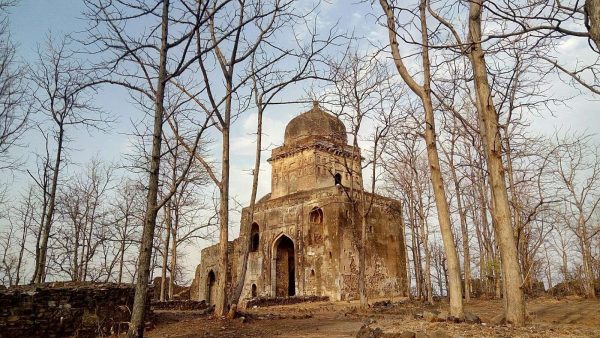Madhya Pradesh, called as kubera ka khajānā attributes this title to the unrivalled, undiscovered treasure hidden in its many splendid forts. One of the grandest forts built at the zenith of the Gond dynasty is the Deogarh or Devgarh Fort at its capital city of Deogarh.
Built in the 18th century by King Jatav and perhaps modified by the successive king, Bakht Buland Shah, this fort was the focal point of many important dynasties of Central India. This fort has been mentioned in Mughal literary works like Badshah Nama written during the time of Akbar.
Located in the ancient Chhindwara district, this fort is said to have been built by cutting a large rocky mountain. The fort stands at about 650 metres from the ground designed to take advantage of the vantage view.
There is a gate in the north that leads into the fort which is surrounded by a deep moat all-round. According to historians, this fort was considered to be one of the most spectacular as well as safest forts ever built and deemed to be the pride of the tribal kingdom. There was even an underground passage connecting Devgarh with Nagpur which could have been used by kings and queens to make a safe exit if the fort was attacked.
The design of the fort bears semblance to the Mughal style of architecture. This fort unfortunately is crumbling and only remnants of structures are seen. It is quite likely that you will be the only visitor on that day as this fort is fairly unknown outside of Madhya Pradesh. There is a Nagarkhana (music gallery), Badal Mahal, Kachari (ruins of the darbar (royal court)) and dilapidated fort walls.
Soldiers were stationed on the roof of the Nagarkhana and the arrival of the king was preceded by the beating of drums. The exterior walls of Nagarkhana are richly decorated but sadly very little of the old charm remains.
The royal court of the king used to be in the Kachari. Here the king and courtier used to sit on the raised seat and the public would stand in front of them. The roof of the seat is adorned with beautiful wooden columns and one can imagine how the royal court might have been with the king seated on his bejewelled seat holding court! Historical records say that people were granted entry only on the permission of the king and a vigilant security cover was in place to keep an eagle eye on the commoners.
There are separate baths for the king and queen within the palace where pure water surfaces on its own. There is a lovely fountain still in place in the rectangular bathing quarters. The bath or pond meant for the queen is called Motitānka which is full of water even today. The water is so clear that one can see the coin sitting in the bottom of the pool. What is surprising is that this fort is built at an elevation of 650 metres on a high rocky mountain and yet there is abundant supply of natural water even in the peak summer!
Many scientists have tried to find the source of this water but have failed. It is perhaps the adequately available natural water on the mountain that encouraged the kings to build a fort atop it.
The water of Motitānka is said to have medicinal and healing properties and is often taken as medicine by the locals. Locals believe that the legendary paras patthar or Philosopher’s stone lies in the Motitānka. They claim that when you throw iron into the pool, it becomes gold! But, no one is able to retrieve the gold as the depth of the Motitānka is unknown. Some rapacious people came one night and tried to empty the water in the Motitānka using electric water pumps but failed in their mission. This place is generally avoided by the villagers after dark who say that strange sounds are often heard within the fort at the dead of night.
As the fort was continually invaded by the Mughals, the capital was shifted to Nagpur. Legend has it that the king had amassed unimaginable wealth and left it all behind when he left for Nagpur. Locals believe that the treasure probably lies below the Motitānka. Many people have tried over centuries to find the treasure but instead have damaged the foundation of the fort.
There is a temple dedicated to Chandi Mata situated in a bastion of the fort. There are 11 such bastions connecting the strong walls of the fort. There is also a samadhi of Raja Dhurva within the fort complex. Descendants of the royal family visit the Devgarh Fort every Dussehra.
This ruined fort is seated in the midst of stunning natural beauty and dense forest. The fragments of grandeur and eminence seen in various parts of the fort suggests that this fort would have indeed been a visual paradise at the peak of its glory. This monument is now under the protection of the Archaeological Survey of India (ASI).
Written by Lakshmi Subramanian
* Photos are only symbolic (Taken from public domain/internet and any copyright infringement is unintentional and regrettable)


Leave a comment